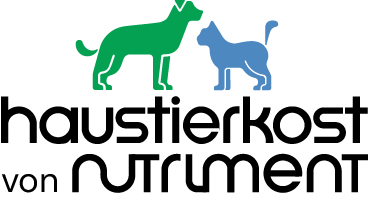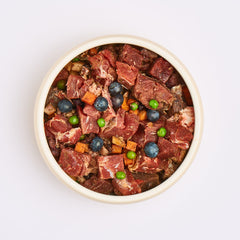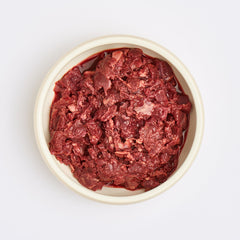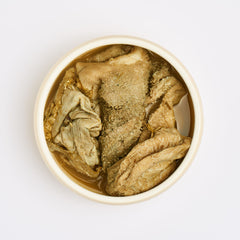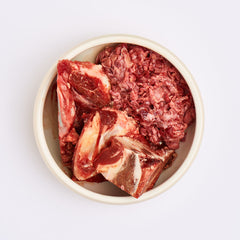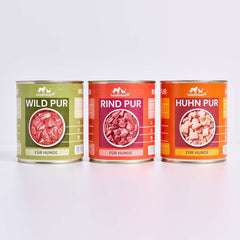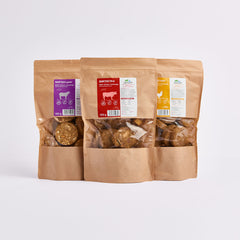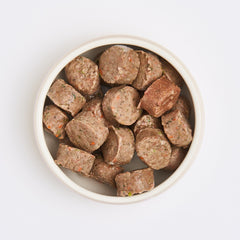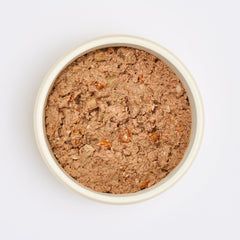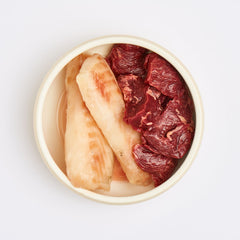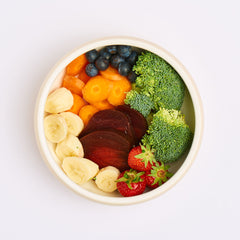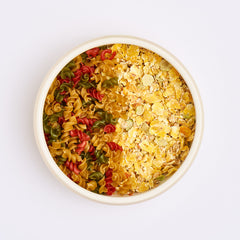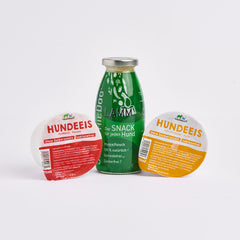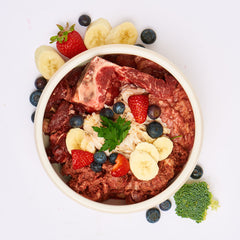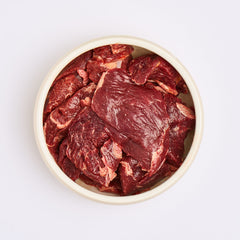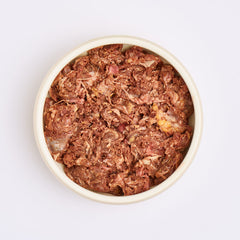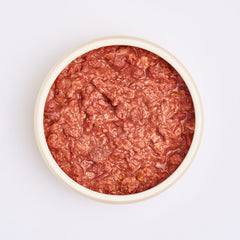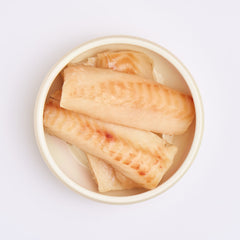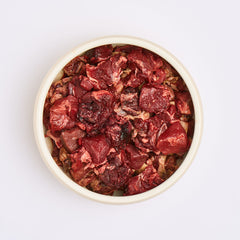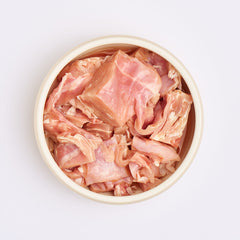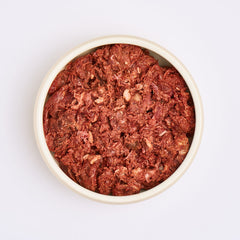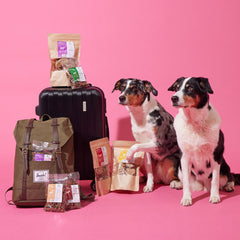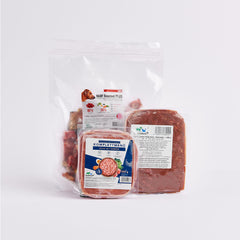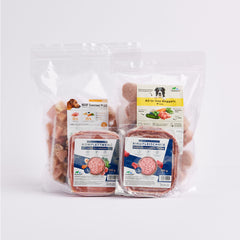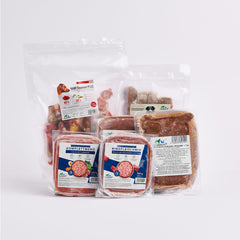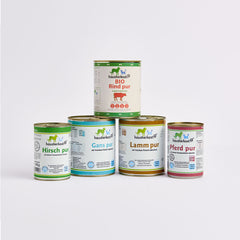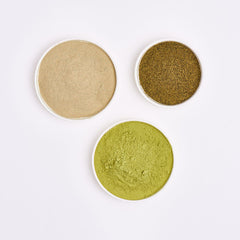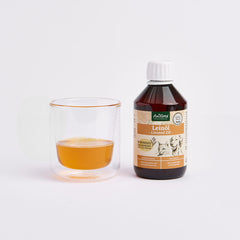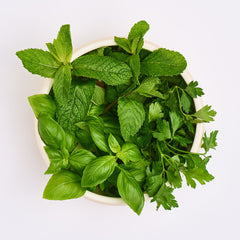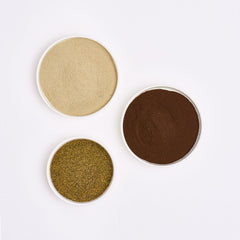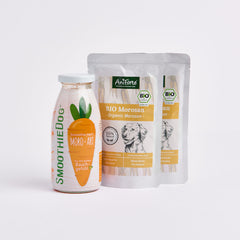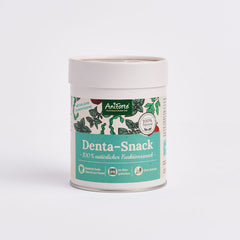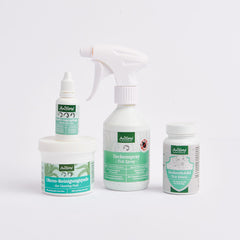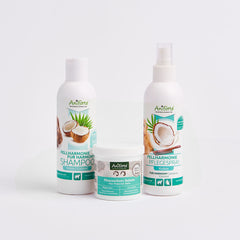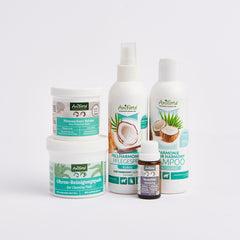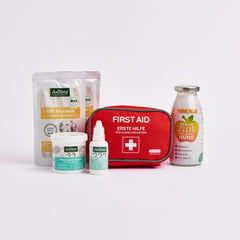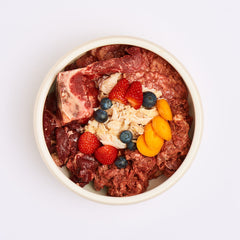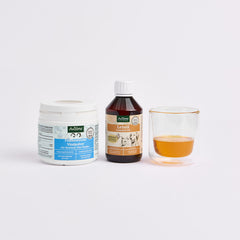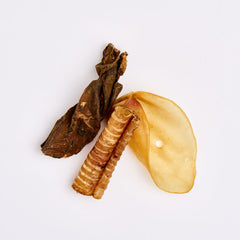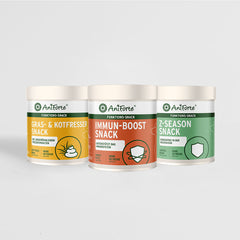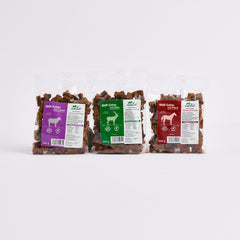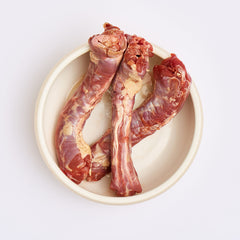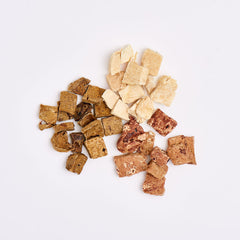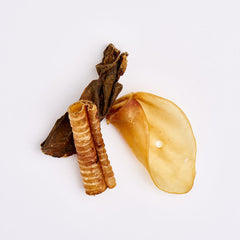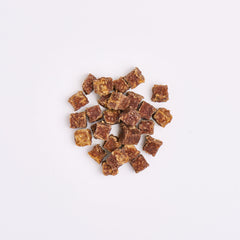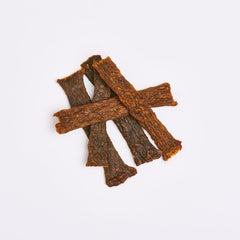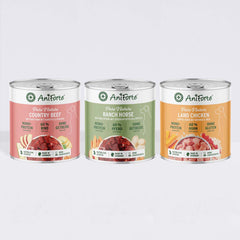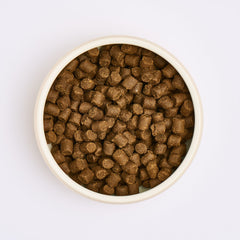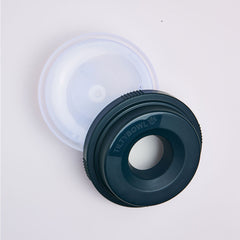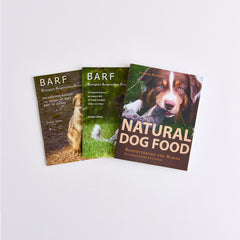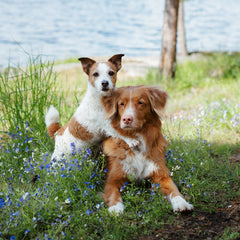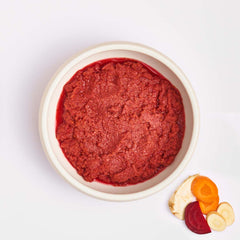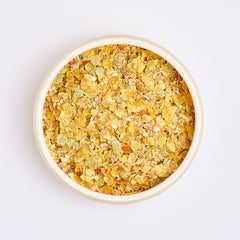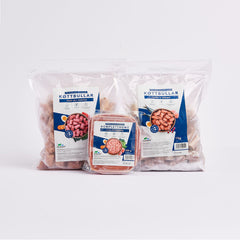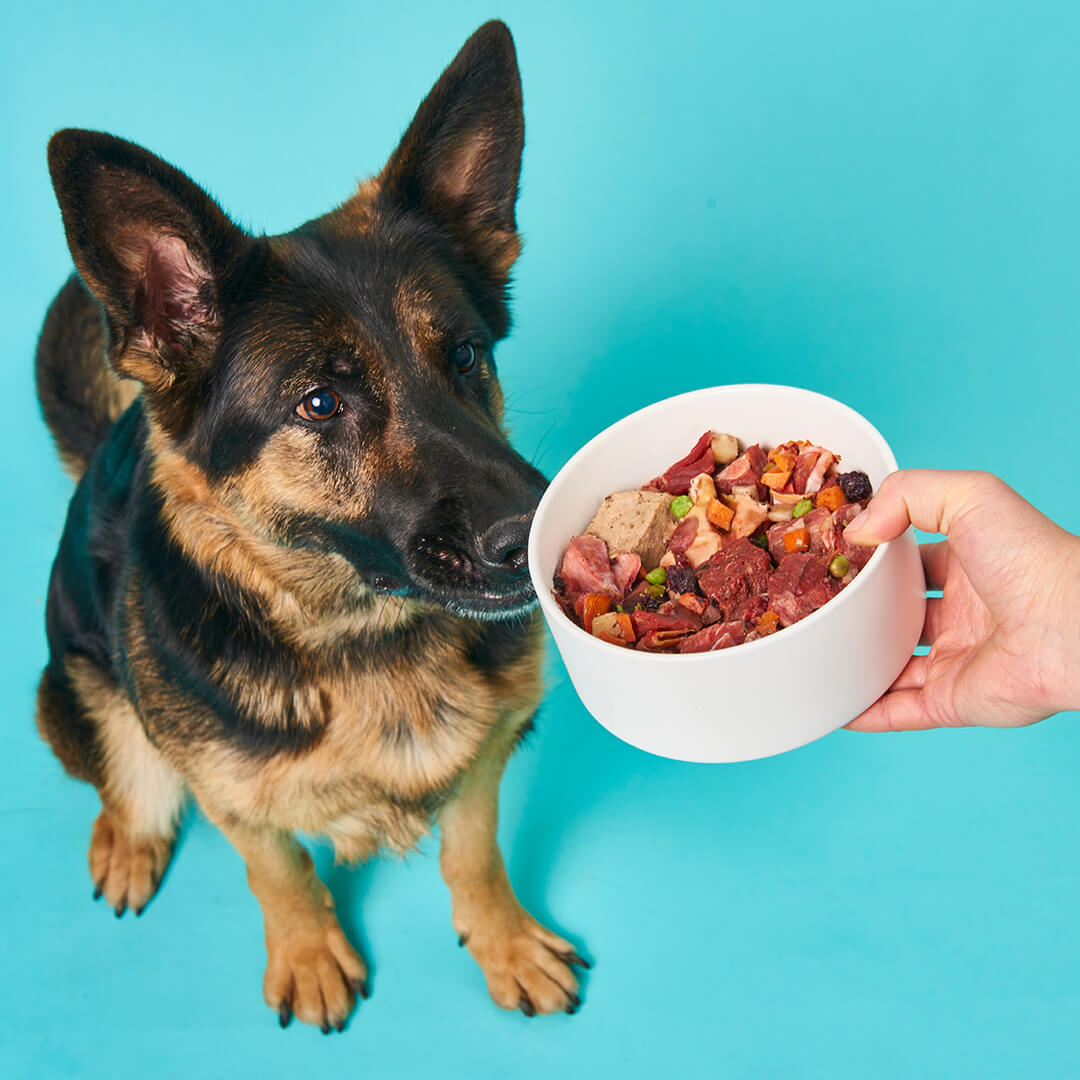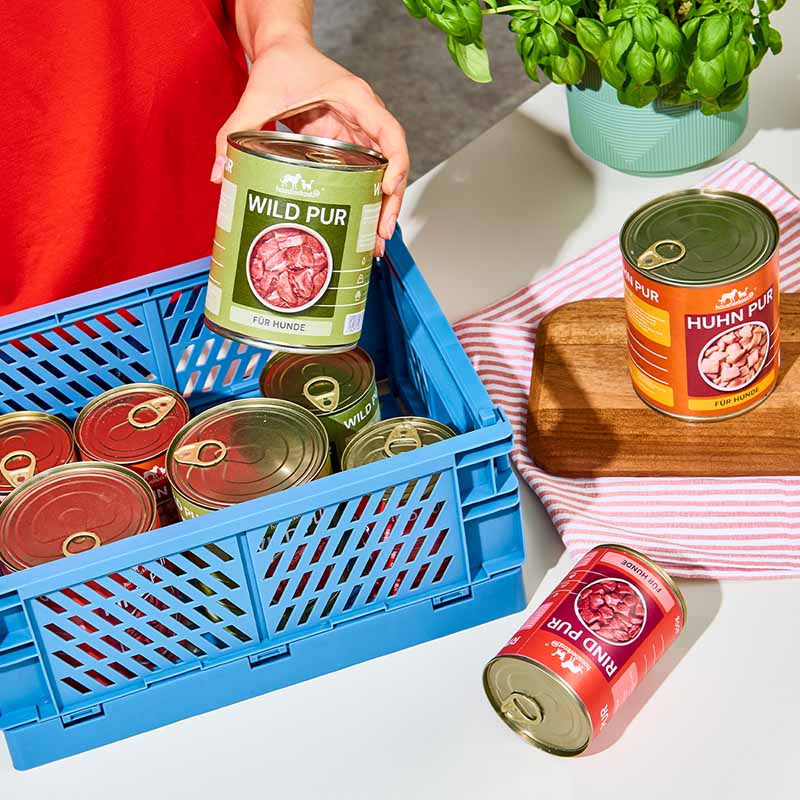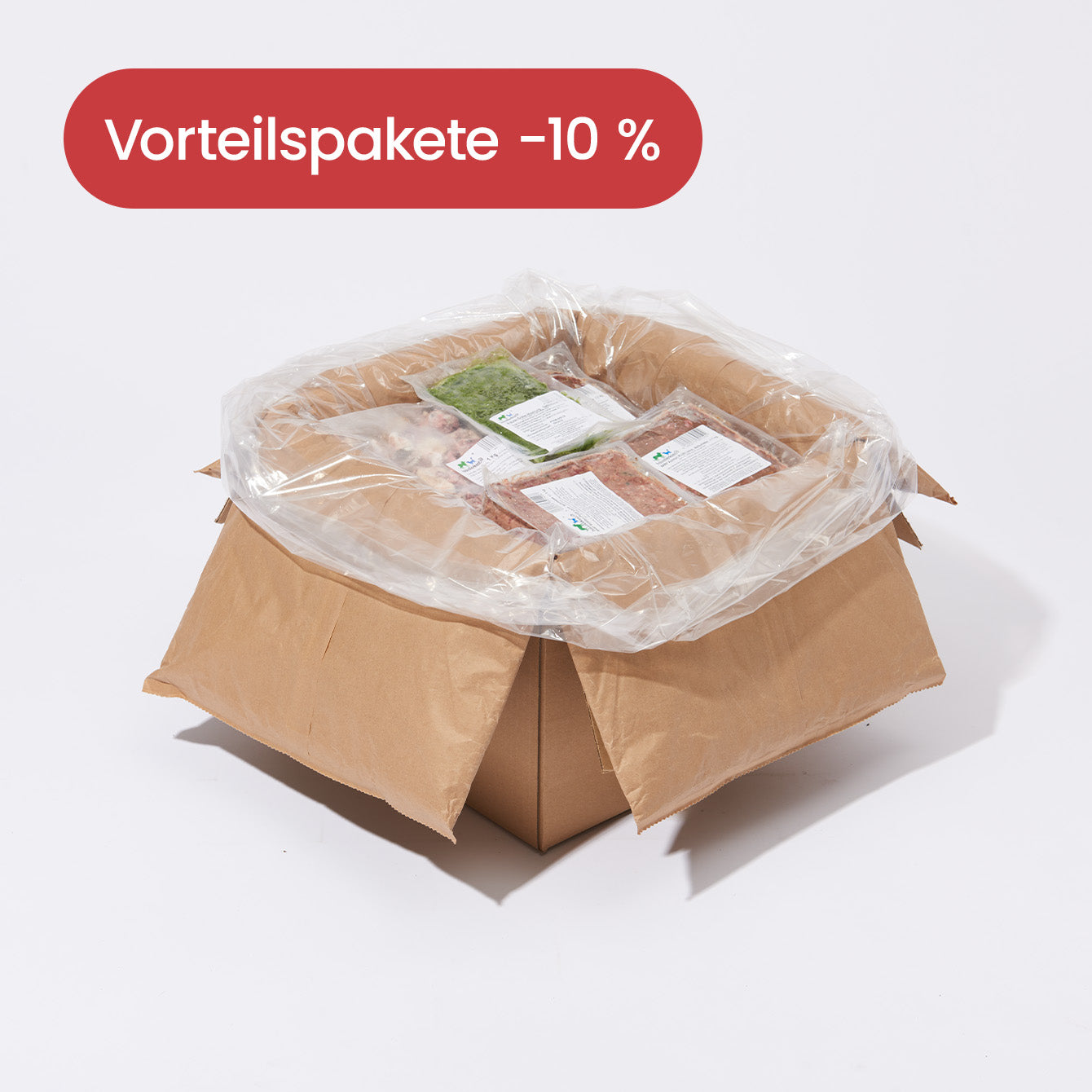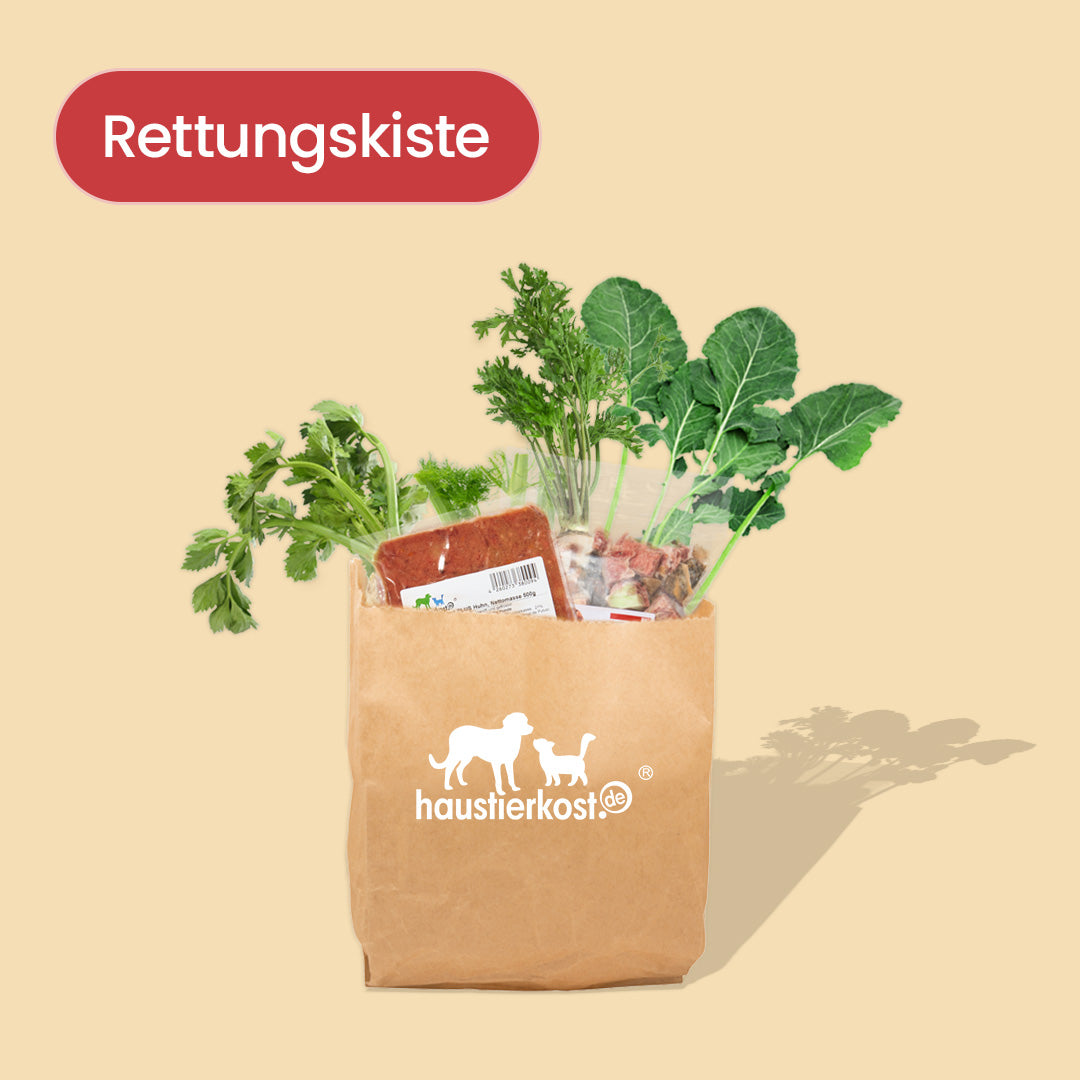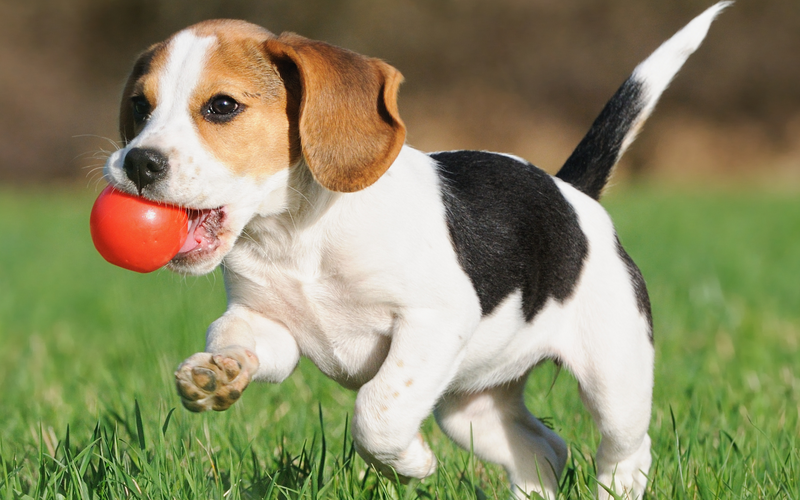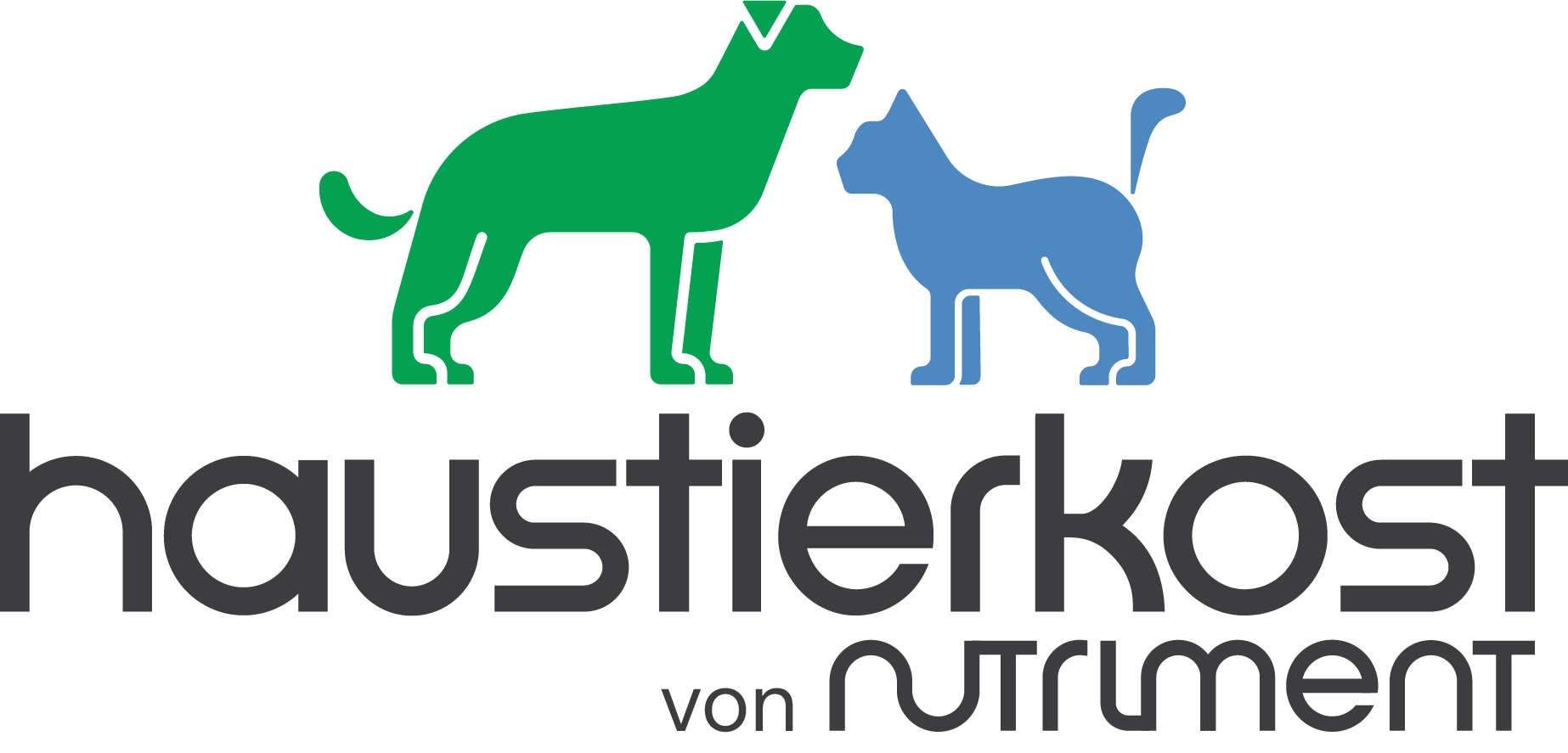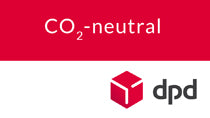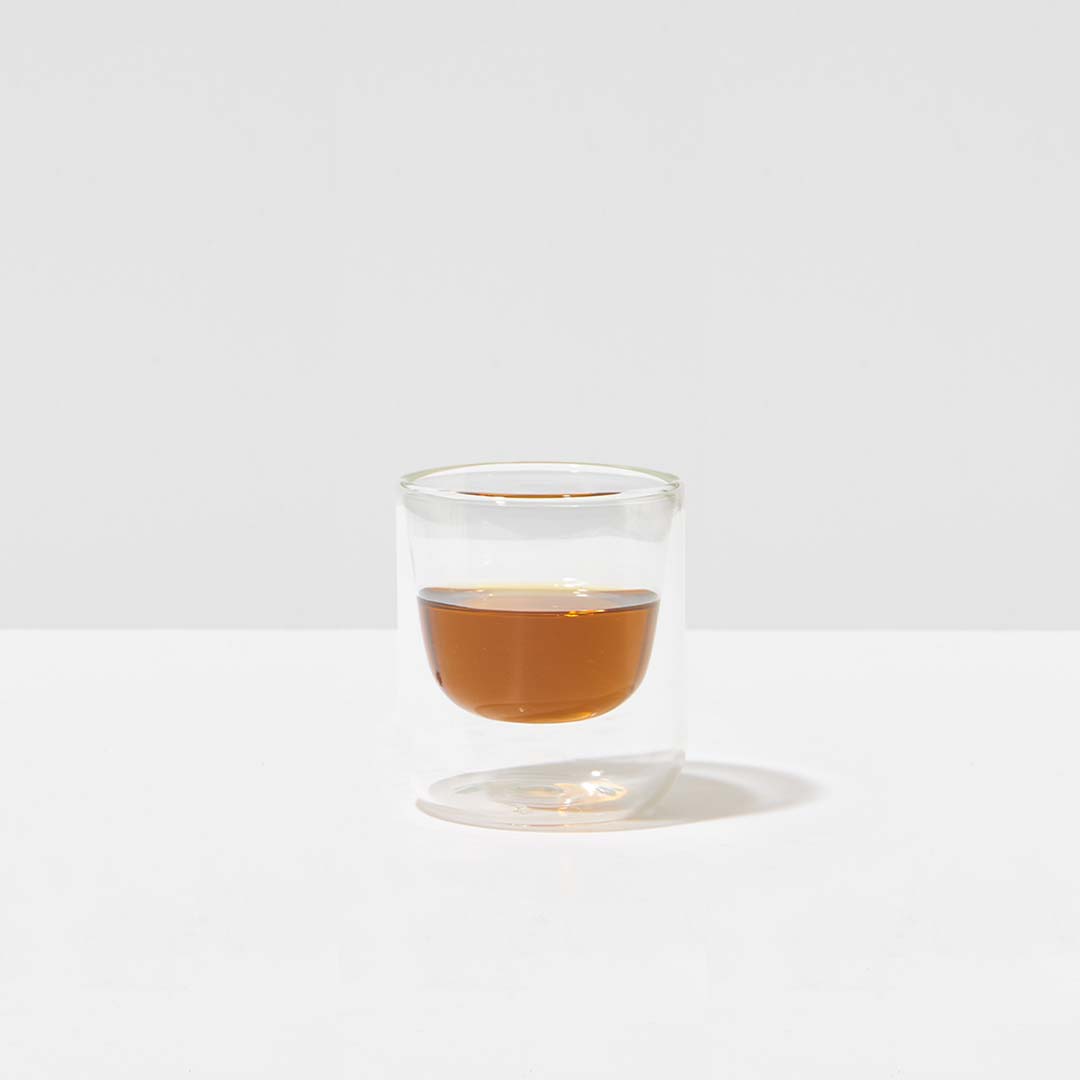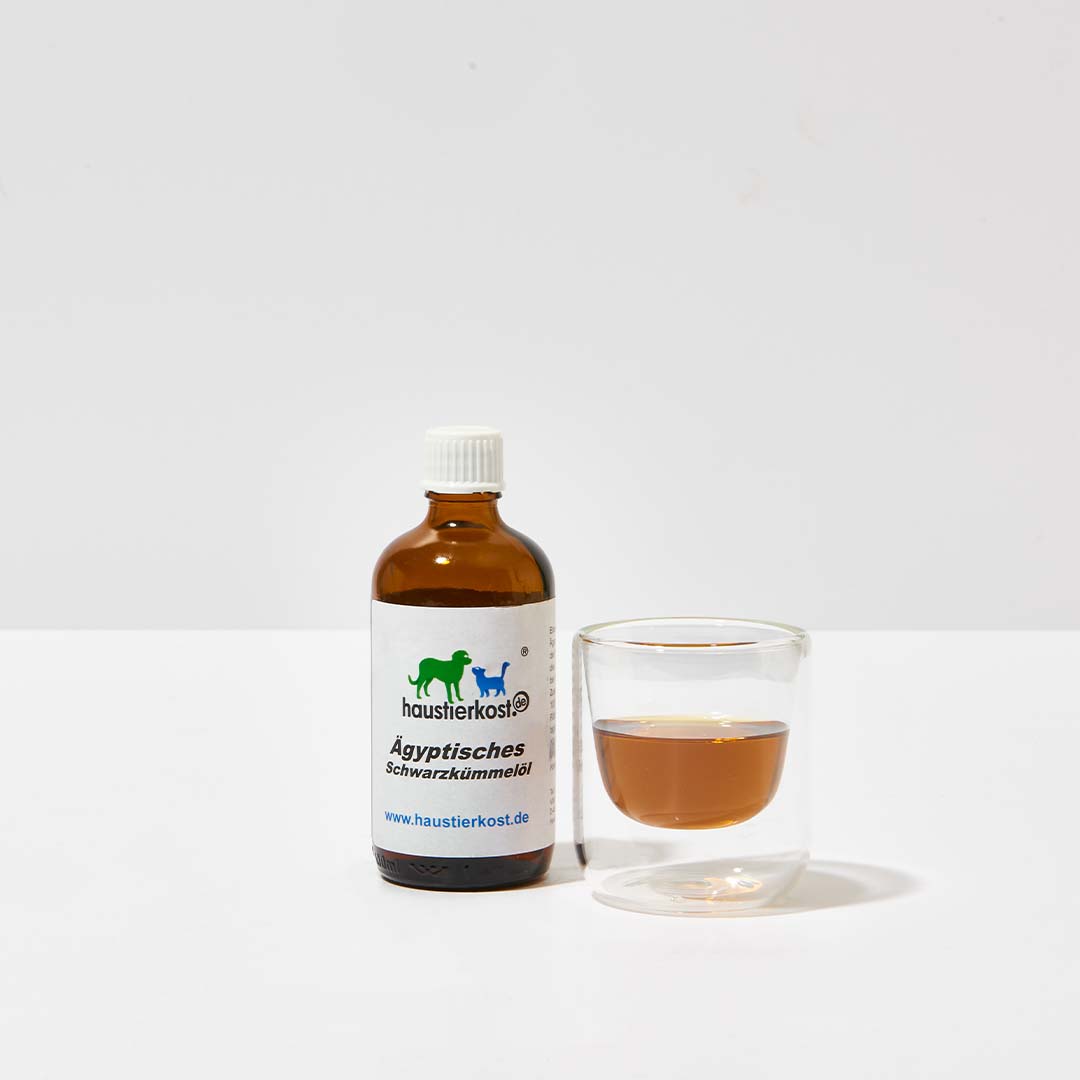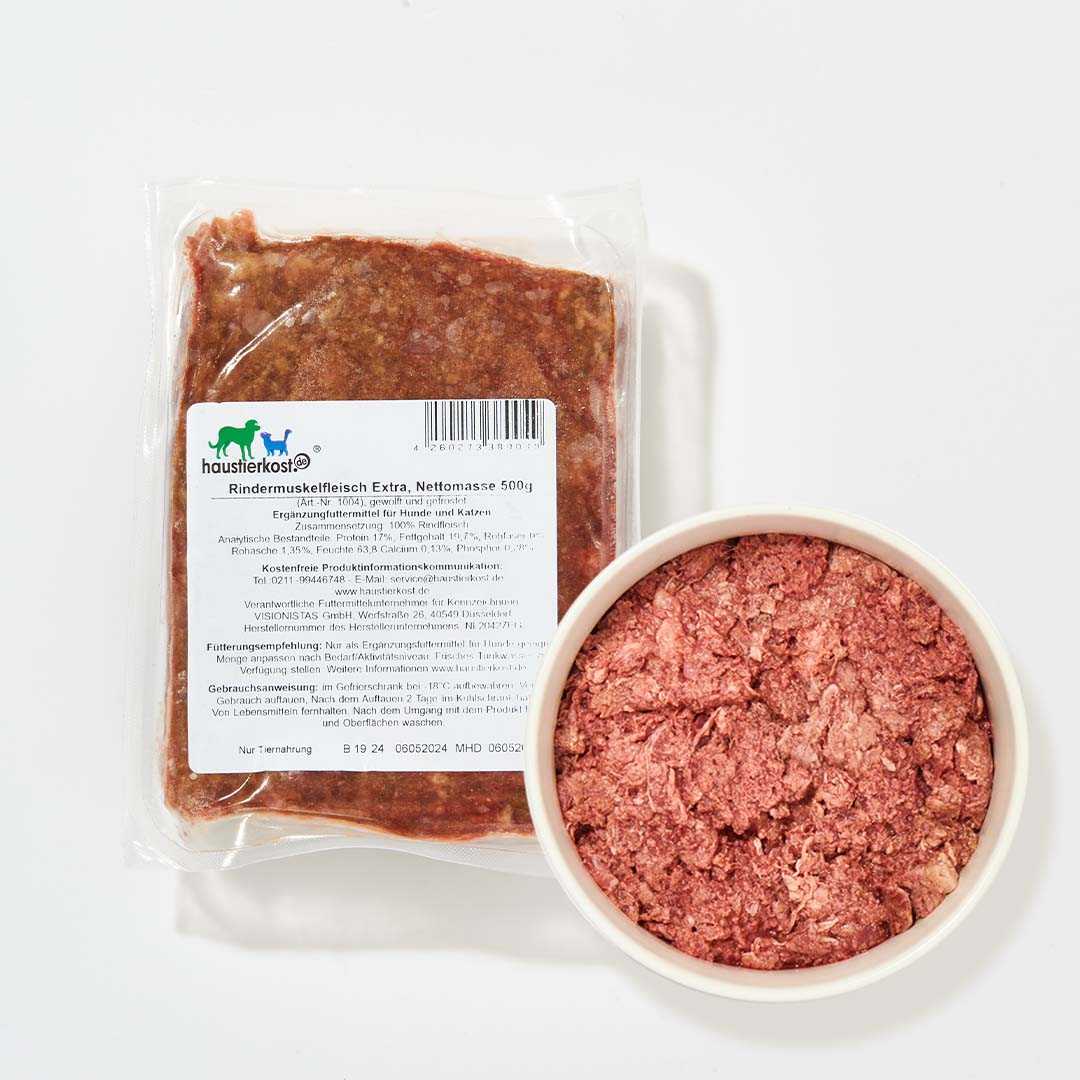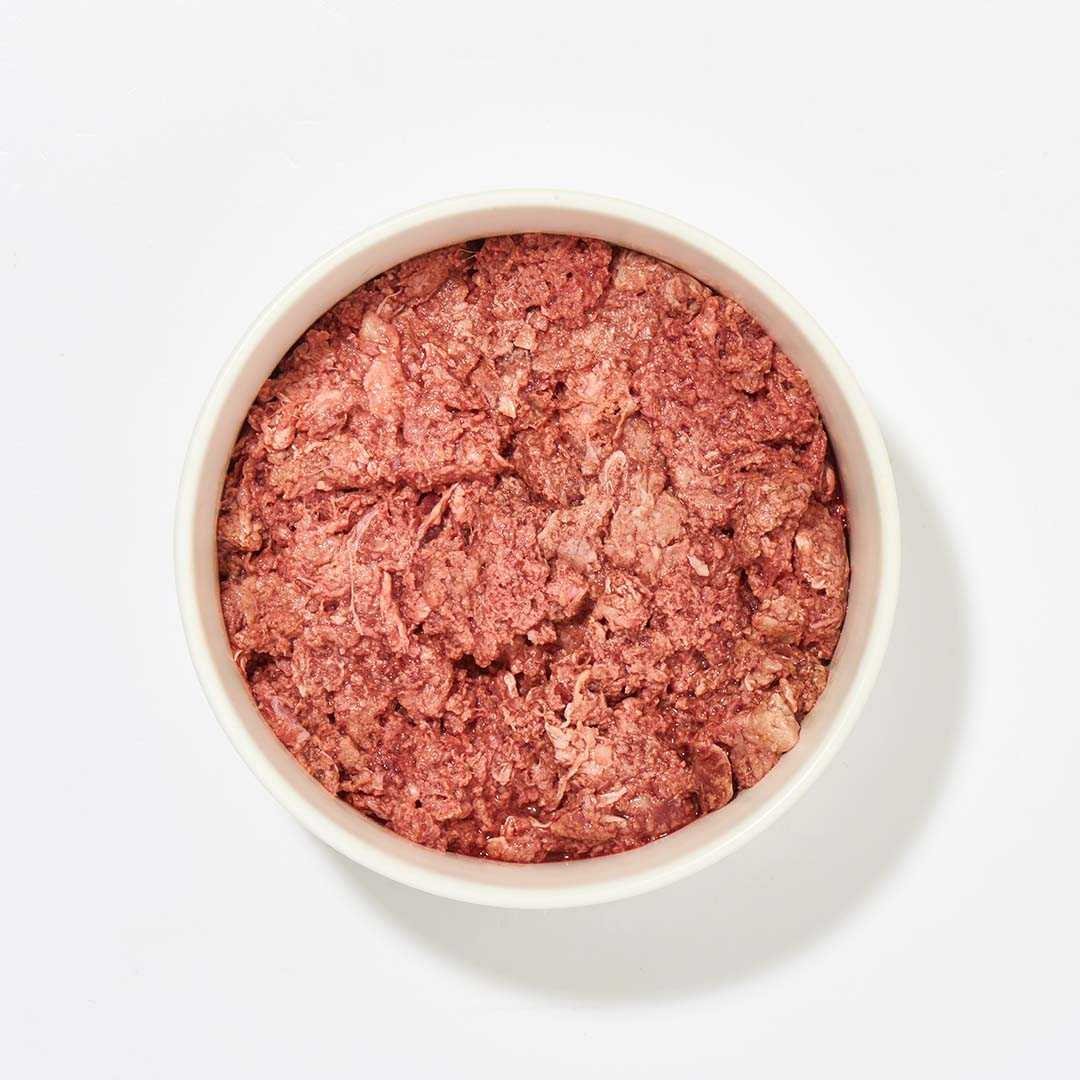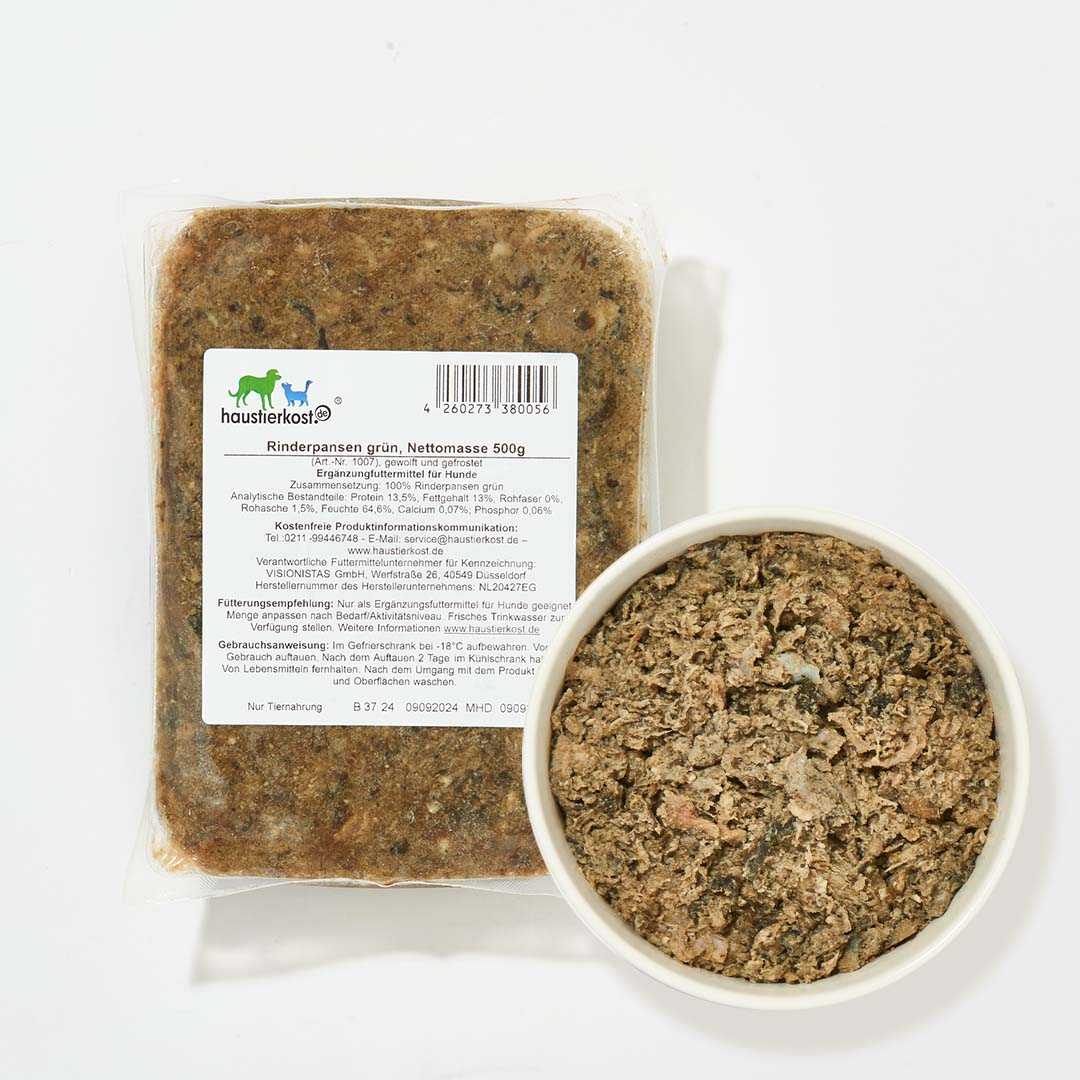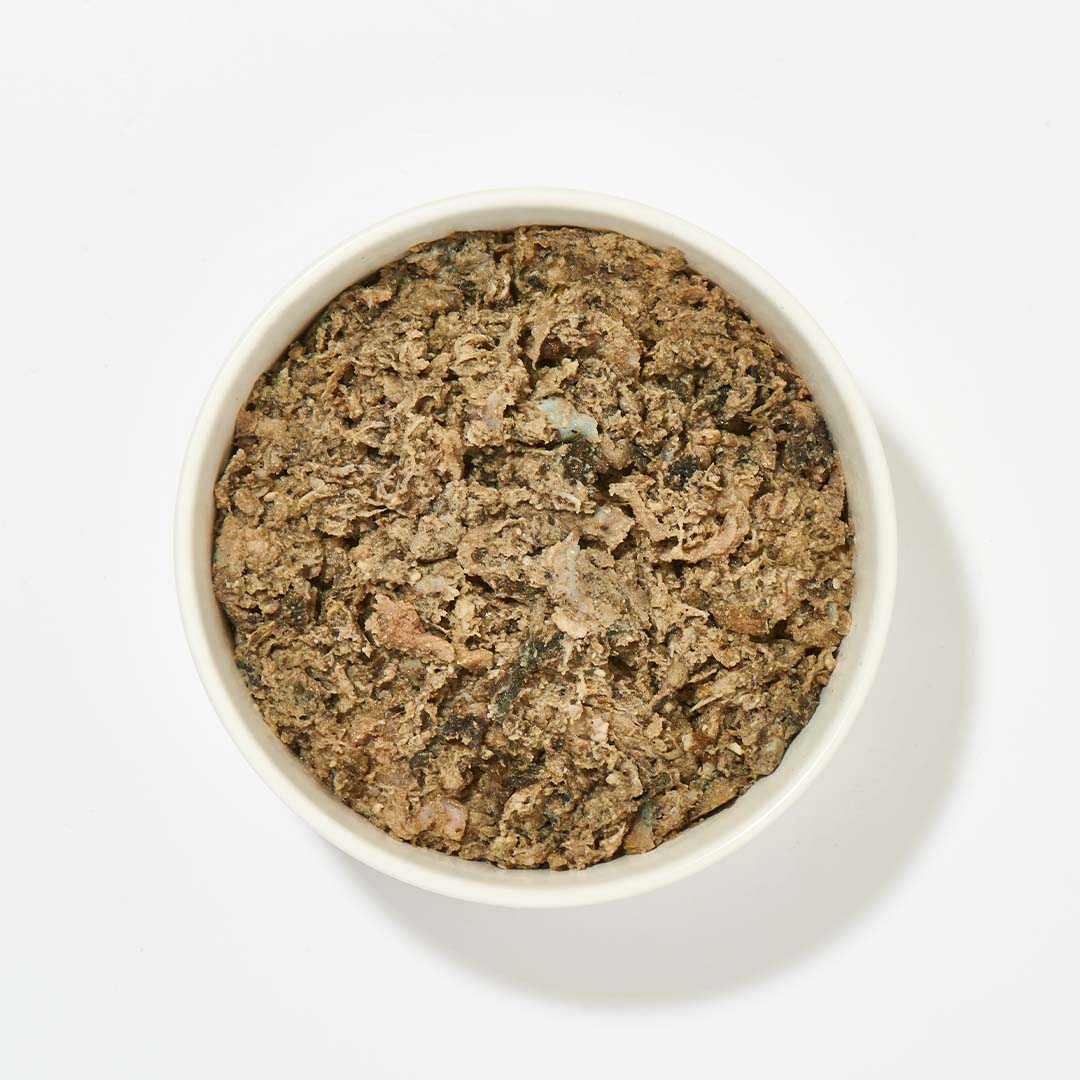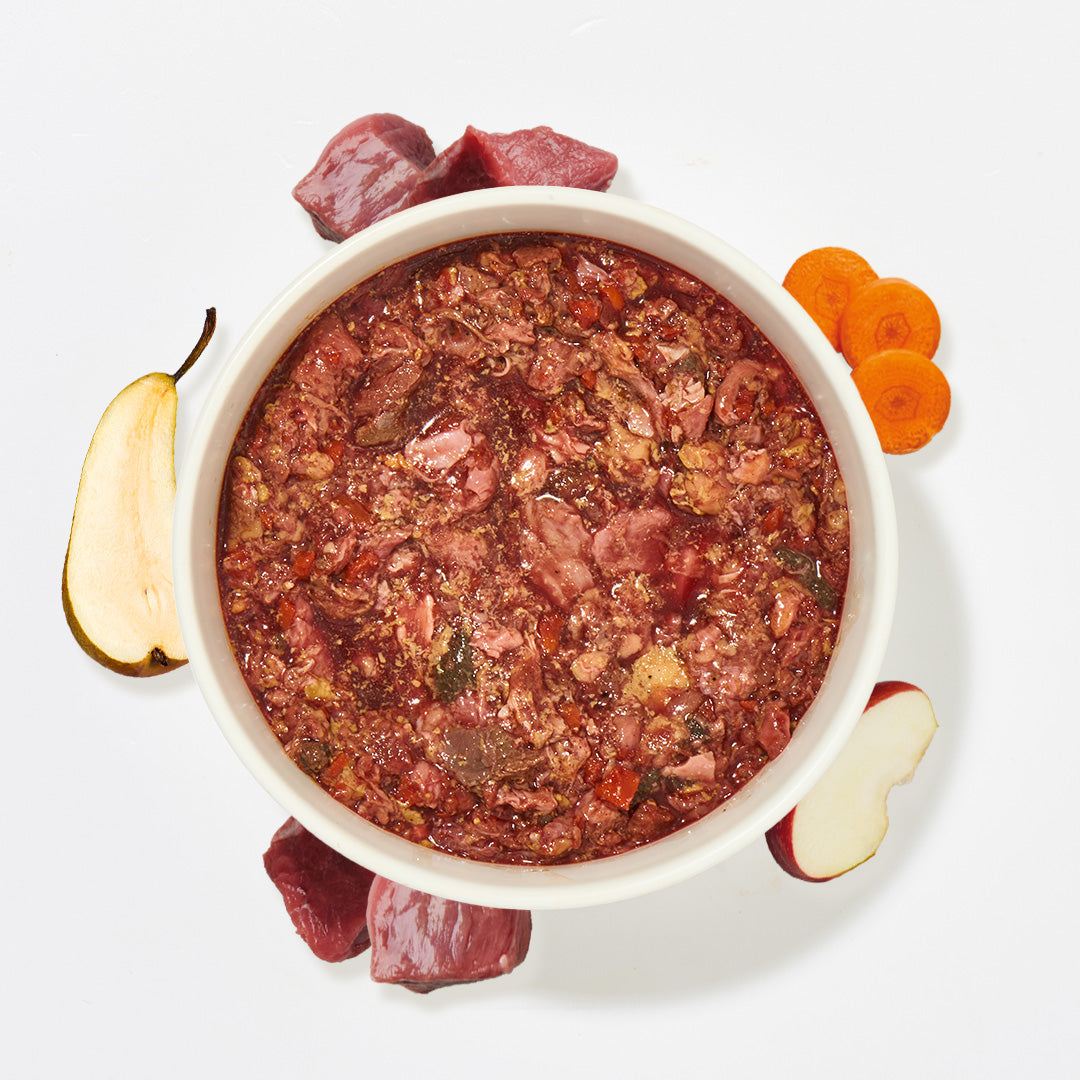BARFing step-by-step - from now on I'm BARFing!
Why do we actually BARF?
BARF, short for biologically appropriate raw feeding, is one of the most natural feeding methods for dogs and cats. This method involves feeding raw meat, bones, vegetables and occasionally fruit into the bowl. It imitates the original diet of wild animals, promotes digestion, strengthens the immune system and supports dental health.
BARFing allows you to adapt to the individual needs of your four-legged friend. This way you can avoid allergies and other intolerances and only feed what your animal loves and tolerates.
What goes into the BARF bowl?
Please note that all information refers to normally active, healthy dogs and cats!
Regardless of whether it is minced, chunked or whole: muscle meat is the basis of BARFing. It should make up 50% to 60% of the meat portion for dogs. For cats, it is even 70% muscle meat. This is because muscle meat is the main energy supplier in the bowl through proteins and especially fats.
To achieve the desired fat content, you can use marbled and lean meat. If the desired fat content is still not achieved, you can also feed additional fat to achieve a total fat content of 15% to 20%. Depending on the type of meat, it is naturally fatty or lean.
Many BARFers find a mixture of light and dark muscle meat to be optimal, as both types of meat have different strengths.
Offal such as liver, lungs, heart, kidney and spleen contain many important nutrients. There are two simple ways to prepare the offal.
The 1/3 rule:
Here you feed 33% liver, 33% heart and 33% spleen, kidney & lung.
According to Swanie Simon & Nadine Wolf:
Another option is heart, kidney, spleen and lung at 17.5% each and liver at 30%.
Of course, you can also feed a ready-made offal mix like our beef offal mix.
Rumen is one of the stomachs of ruminants. It usually comes from cattle, but there is also sheep, lamb or goat tripe if beef is not tolerated.
The omasum and tripe contain a lot of connective tissue and less fat than muscle meat. It is generally difficult for dogs to digest. But why should you feed it at all?
Tripe is particularly healthy for dogs because it contains lactic acid bacteria, which in turn has a positive effect on digestion. In contrast to white tripe, green tripe is pre-washed or just shaken out and contains remnants of the animal's already pre-digested plant food. This means that plant components have already been broken down and the dog can also utilize the plant-based stomach contents.
However, tripe is not a must in a dog's diet, although it usually makes up 20% of the ration in BARF plans. It can also be replaced with muscle meat and fruits and vegetables. If you want to feed it, you can put a smaller amount in the bowl every day or feed it once or twice a week.
Bones are rich in minerals such as calcium, phosphorus, magnesium and zinc. They are essential for achieving a balanced diet and should make up about 10-15% of the feed.
When BARFing, we also speak of raw meaty bones (RKF), which means a ratio of about 50% bone and 50% meat. The latter stimulates the production of stomach acid and ensures that pieces of bone can be processed properly.
The most important rule when feeding bones is that they should never be cooked. This can cause them to splinter and become dangerous. You should also only feed bones under supervision.
If your animal does not like or cannot eat bones, you can feed bone meal or ground bones as an alternative.
In addition to various vitamins and antioxidants, fruit and vegetables also contain a lot of fiber. They help cleanse the intestines, support intestinal movements and provide the body with important digestive enzymes.
When BARFing a dog, 20 to 30% of the bowl should be fruit and vegetables. The lion's share, 2/3, is vegetables, the rest is fruit. Cats, on the other hand, should only be fed vegetables. However, the proportion in the bowl is much lower at just 5%.
In order for dogs and cats to optimally utilize the vitamins and fiber from fruit and vegetables, they should be grated raw or lightly steamed and then pureed. This is because four-legged friends lack an enzyme that is necessary for the breakdown.
To make it easier for you, you can use one of our fruit and vegetable mixes or vegetable flakes that only need to swell in water.
Fat
Fat is the most important source of energy in BARF feeding. It is also necessary for a healthy metabolism. In a normally active, healthy dog, the fat content in muscle meat should be 15-20%. With higher activity, the fat can be increased to up to 25%.
Cats have a very high tolerance threshold for animal fat, so the fat content can be higher.
How do I calculate the fat content?
If the fat content of the muscle meat is below the ideal value, fat must be added. You can easily calculate the amount using a BARF fat calculator or a rule of thumb.
Rule of thumb
(Target fat content % - actual fat content %) x muscle meat g / (100 % - actual fat content)
Means for 250 g of muscle meat, a 12 % fat content and desired 18 % fat
(18% - 12%) x 250g : 100% - 12% = 15 : 0.88 = 17.04545
The additional fat must then be deducted from the muscle meat. In this example it would be: 250 g muscle meat - 17 g fat = 233 g muscle meat + 17 g additional fat
oil
Oil vs. Fat
The animal fat in muscle meat cannot be compared to oils, as animal fat is there purely to provide energy.
Vegetable oils such as linseed oil, hemp oil or fish oil such as salmon oil or omega-3-6-9 oil are there to enrich the food with omega-3 fatty acids. However, they have nothing to do with energy supply. The daily requirement for oil is assumed to be 0.3 g of oil per kg of dog/cat.
Supplements or complementary foods for dogs and cats are nutritional supplements that contribute to the complete nutrition of your four-legged friend and prevent deficiencies.
Dog supplements include, for example, vitamins, oils and minerals that are either missing or present in insufficient quantities in conventional foods.
For example, a cat needs omega-3 fatty acids, which the body cannot produce on its own. These can then be supplemented with salmon oil.
A supplement composition can, for example, consist of seaweed flour (for iodine), rosehip shells (for vitamin C), OptiMSM (for the joints) and omega-3-6-9 oil.
With supplements you can support your four-legged friend individually according to his needs.
BARF meat - the advantages of the prey species at a glance
This is how you choose exactly the right one!
Raw beef is ideal for dogs and should be fed in all its variety : muscle meat, offal and bones all belong in your four-legged friend's BARF bowl. The animal's nutritional needs can easily be met with different parts of the beef.
Horse meat is an excellent choice for four-legged friends who rely on exclusion diets , especially those with allergies . It is particularly lean, contains a lot of protein and is rich in important nutrients such as vitamin A, iron, sodium, magnesium, calcium and copper.
The high concentration of unsaturated fatty acids also makes it a healthy source of fat that is good for the cardiovascular system . Because of its lean properties, horse meat is also suitable for animals that are overweight and should be fed a reduced calorie diet.
One of the main benefits of lamb is its high content of omega fatty acids . These healthy fats are important for optimal skin and coat health.
Omega fatty acids have anti-inflammatory properties and can help reduce skin irritation and inflammation in the gastrointestinal tract, making lamb an excellent choice for dogs suffering from skin problems or digestive disorders.
The vitamins in poultry meat, such as vitamin B12 and vitamin D, support the immune system and promote the health of skin and coat .
The high-quality protein helps build and maintain muscle, while the unsaturated fatty acids are important for heart health and general well-being.
Venison is rich in vitamins, especially the B vitamins, which are important for energy production and nervous system health . It also contains high amounts of minerals such as iron, zinc and selenium .
Another benefit of game meat is its low fat content. This makes it particularly suitable for dogs who need to lose weight. Due to the lower fat content, game meat can help control calorie intake without sacrificing important nutrients.
Fish has a high omega-3 fatty acid content, these healthy fats are important for the general health of your four-legged friend. They support the cardiovascular system, contribute to healthy skin and a shiny coat and can reduce inflammation in the body.
Fish is also an excellent choice for all animals that suffer from a meat allergy. Fish is a welcome alternative, allows for a varied and balanced diet that is often better tolerated.
Exotic BARF meat, such as kangaroo, camel or ostrich, is particularly valuable for four-legged friends with special needs.
If a dog is allergic to common types of meat such as beef, chicken or pork, exotic meat can be a helpful alternative. Exotic meat can be used to adapt the four-legged friend's diet and promote his health.
In addition, kangaroo, camel and ostrich meat contain valuable proteins, vitamins and minerals that contribute to the general health and vitality of your four-legged friend.
Discover our categories now
BARFing puppies
Do you have a puppy and want to start BARF right away?
Great! Puppies have some special needs, so we have a guide for you here!
BARF: Feeding puppies biologically and species-appropriately - haustierkost.de
From the right start of the BARF diet to the correct division of portions for your dog – what does BARFing for puppies involve?
Do you still have questions?
Our customer service will help you!
You can reach us on weekdays from 8 a.m. to 6 p.m.
0211 - 99 44 67 48
service@haustierkost.de
